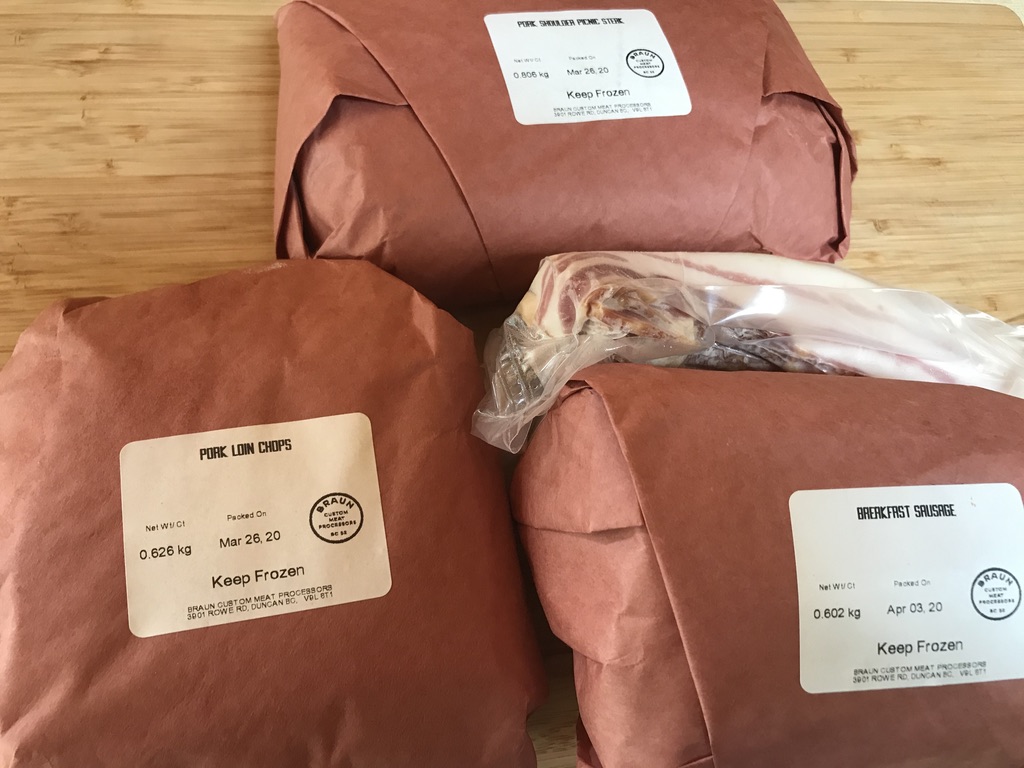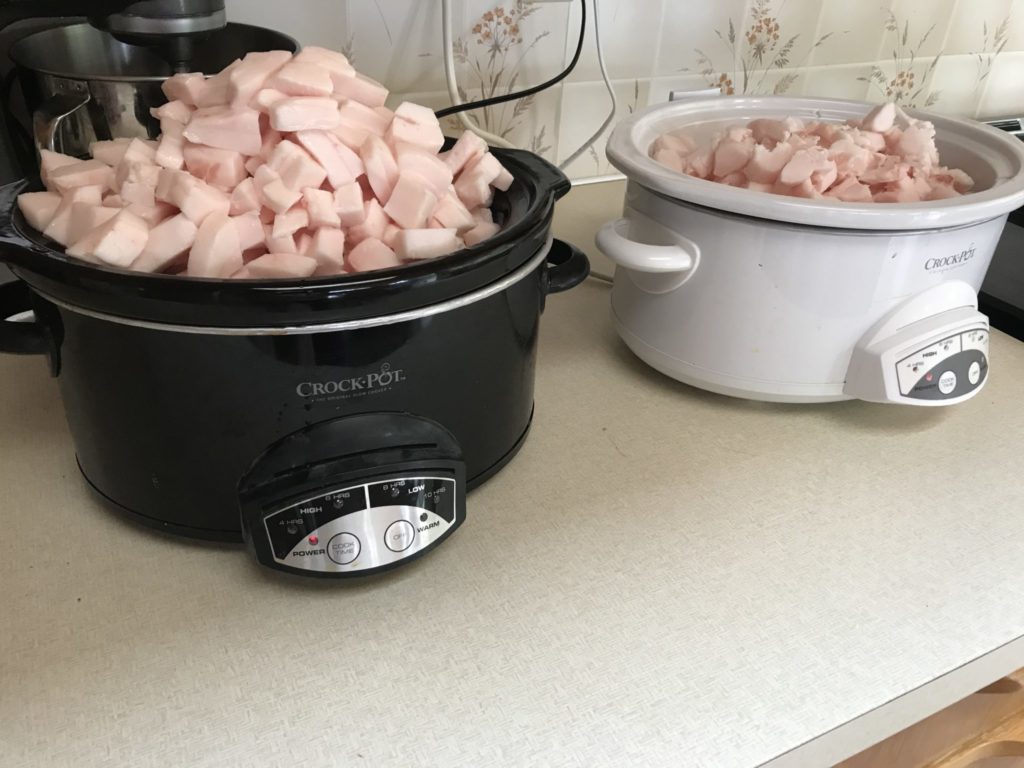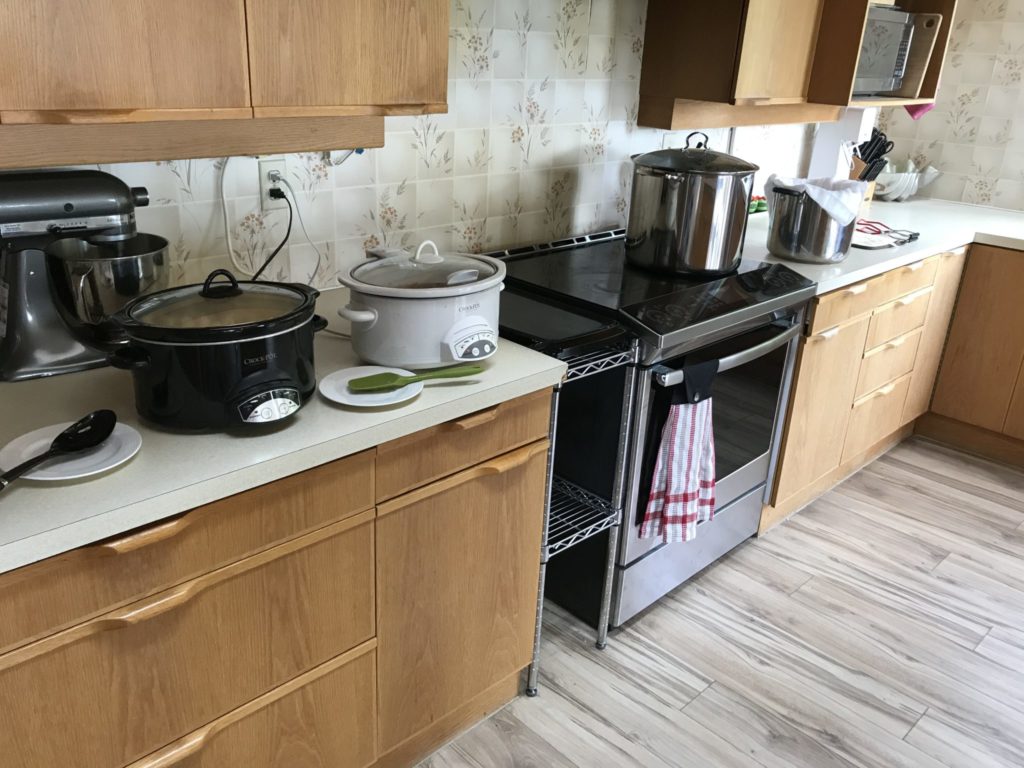This week we received our first batch of pork back that was harvested last month. It was a lot of pork! The hanging weights on our two hogs were 111 and 127lbs. On the hoof they were approximately 155 and 176lbs, so it worked out to exactly 72% which exactly aligned with the accepted industry standard. Of the 111 and 127lbs, we got 12lbs of lard per hog, about 5-6lbs of leaf lard and 6-7lbs of back fat. We also went for a lovely 20lbs of breakfast sausage and 28lbs of bacon and ham. We’ve tried a little bit of everything so far and could not be happier.
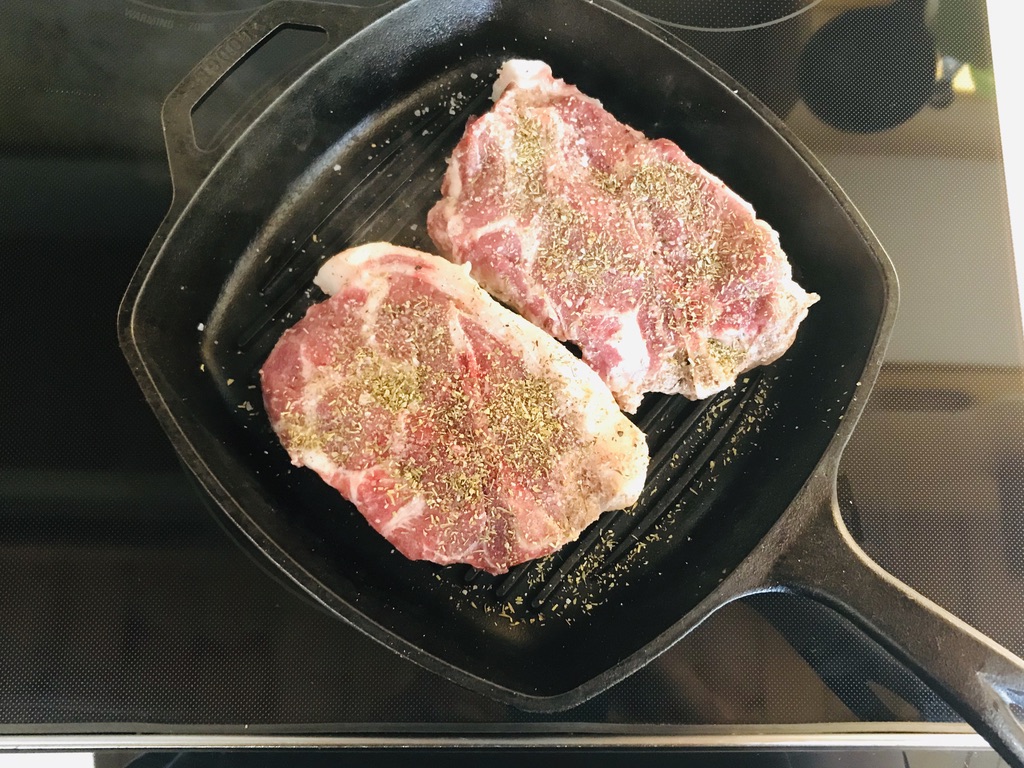
We love knowing where our pork came, it was humanely (and dare I say, lovingly) raised, fed an ethical, nutritious, vegan diet, and will pass on the health benefits of being raised on pasture, including increased levels of omega 3 in our diet. Especially in today’s global economy, it is satisfying to know that on very little external feed we can raise enough pork to feed our family all year with just 2-3 pigs. Self-sufficiency takes an initial investment, daily commitment and a little bit of work, but the rewards are priceless in our eyes.
Today we are rendering half the lard we harvested. It will go into jars for cooking, baking, and for making soap (more on that to come!). Lard conjures quite a bit of controversy. It all stems from what Corva Bella Farms describes as a “Corporate Coupe”. They had Crisco to sell and lard was demonized to make room in the market for their processed alternatives. It sounds rather sensational and I won’t attempt to review the entire history in this post but if your interest has been piqued, I’d highly suggested popping on over and seeing that original post, “Praise the Lard“. Despite the bad press, the nutrition of lard is undeniable. I had to research this a lot because let’s face it, this is quite a paradigm shift for me too! Even the BCC agreed with the nutritional benefits of lard. Lard shows up as number 8 on the BBC’s list of 100 most nutritious foods. It is listed up there with swiss chard, pumpkin seed, perch, and almonds. I will still add the caveat that while nutritious for a FAT, it is still a fat! Fats will continue to make up a small portion of our diet. This is not a superfood that will imbue you with magical health but when I do need to choose a fat to cook with, you better believe I will reach for the lard first!
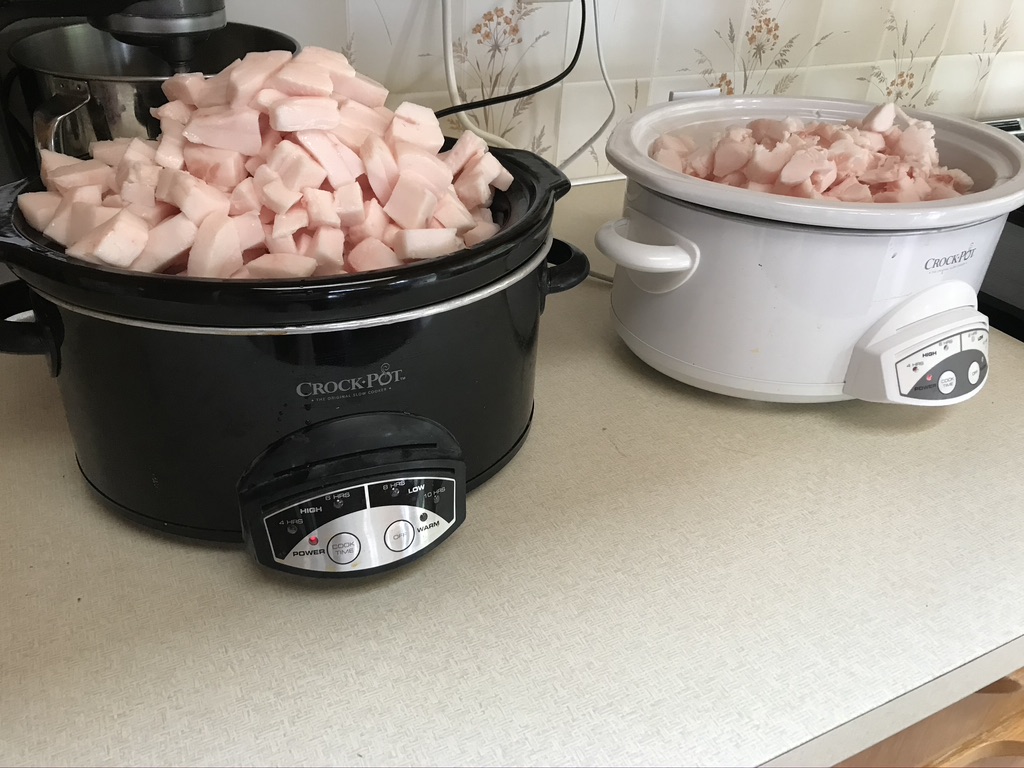
Here we’ve summarized our favourite points from “Seven Reasons Why You SHOULD Eat Lard“, added a few of our own, and synthesized a further explanation as well as information on how to render lard from Mommypotamus.
- Lard is high in Vitamin D: Lard from pastured pigs contains anywhere between 500-1000 IU vitamin D per tablespoon. This is dependant on sun exposure and diet and why this is a unique quality of pasture vs. commercially raised pigs. The only dietary source higher in vitamin D is cod liver oil.
- Lard is Heart-Healthy: How can a saturated animal fat be good for my heart? Lard is in fact classified as a monosaturated fat. It’s about 45-48% monounsaturated fat (oleic acid – which is ALSO found in olive oil), 40% saturated fat and 12% polyunsaturated fats. Monosaturated fats are the ones responsible for lowering “bad” LDL cholesterol while sustaining “good” HDL cholesterol.
- Lard is a great cooking fat: The smoke point is 370F. You can bake, saute, and deep fry at these temperatures which is a huge perk in our kitchen.
- Lard can be ethically, sustainably, and locally produced: Outside our back door does not get any closer!
- Lard is economical: At $5 a lb for nutritious pasture-raised lard, it is just a few dollars more than the generic lard you may find in at a commercial chain store.
- Lard is easy to make and store: When rendered down the fat is easy to store in a jar in the fridge, freezer, or canned in the cellar. In its pure state it can last up to a year.
- Lard is what grandma used to use: In a diet that gets back to eating simply, lard is a standout star of traditional and simple fats.
- Lard does not have a strong taste: Don’t worry, it won’t make everything like bacon.


